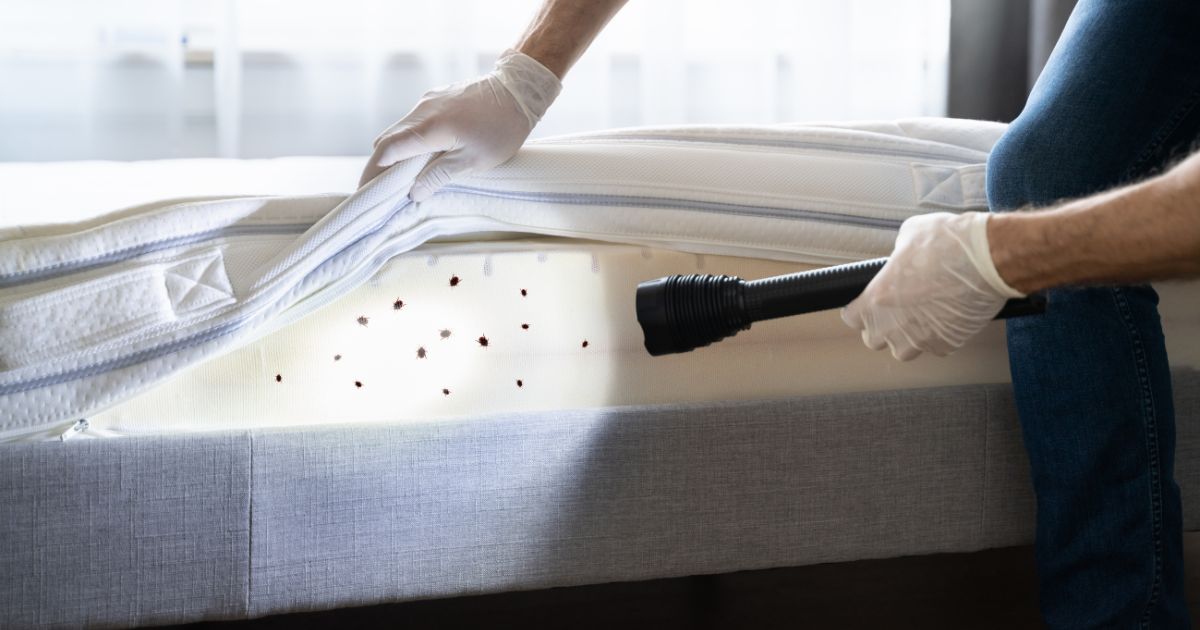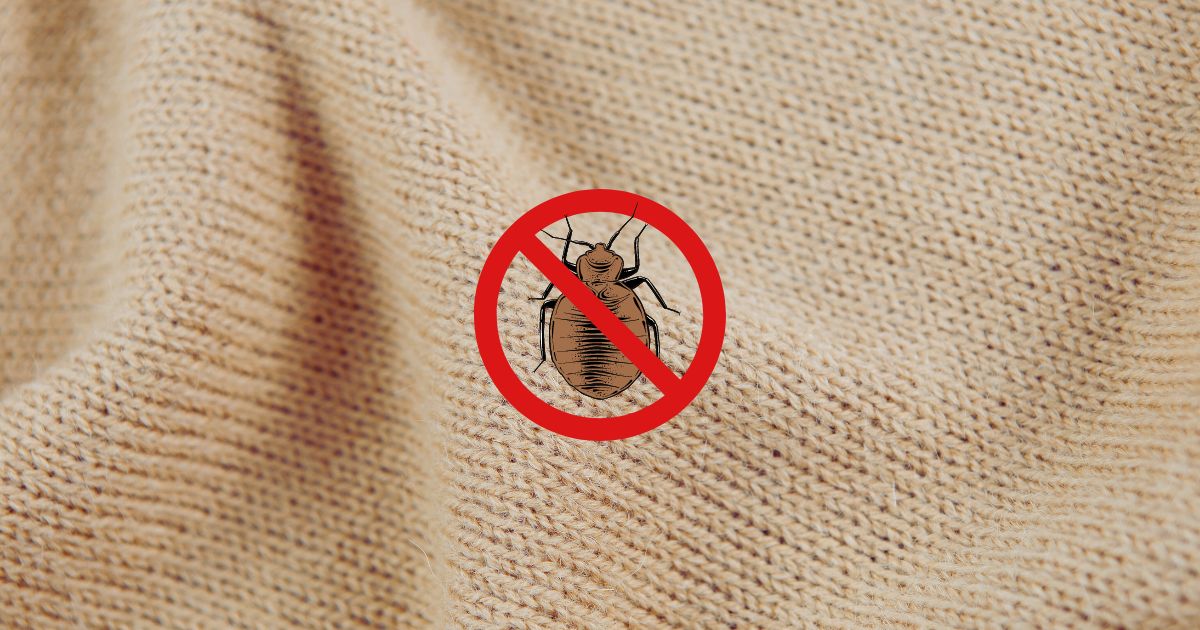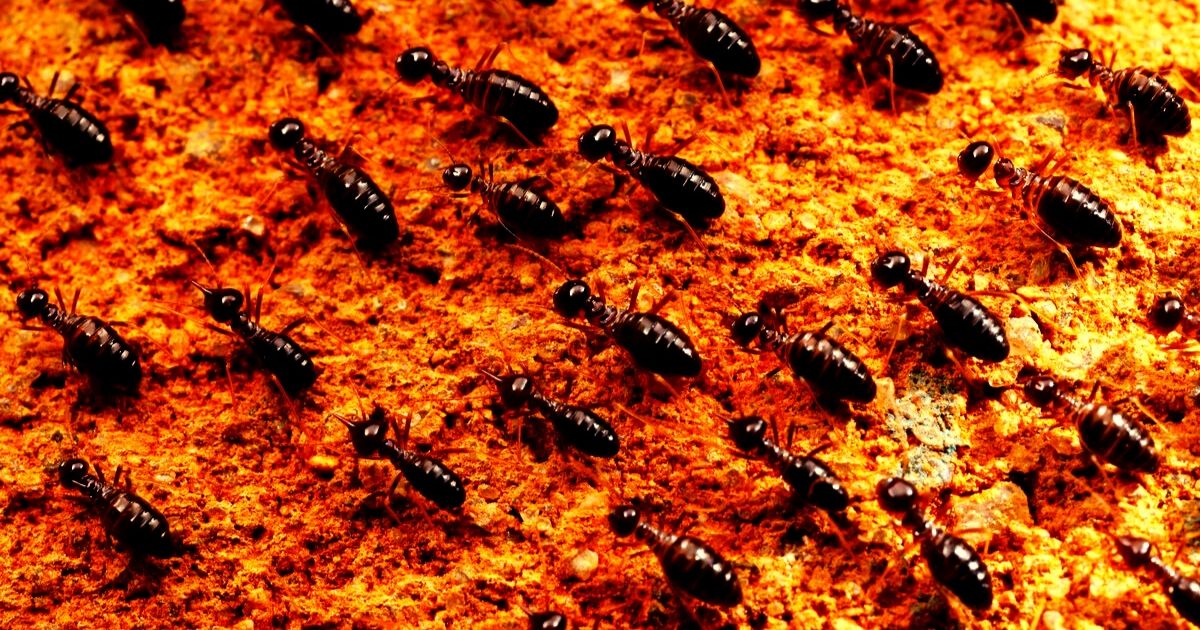Booklice Versus Bed Bugs: What Are the Main Differences?
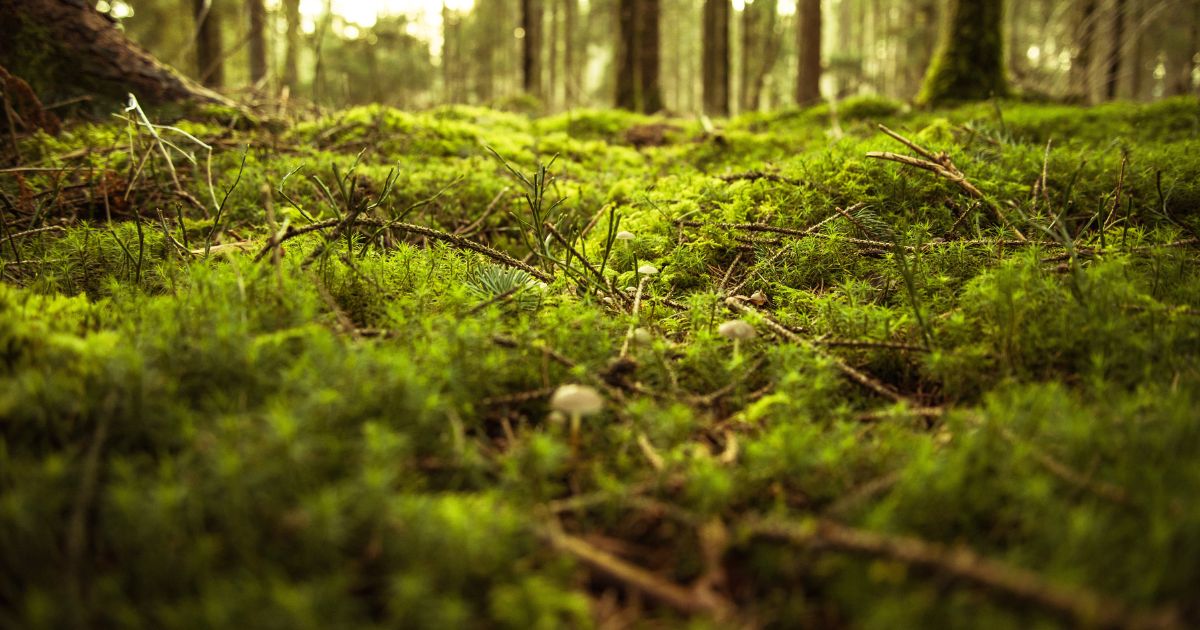
We often get questions about the differences between booklice and bed bugs. If you want to spot and remove an infestation of booklice or bed bugs, you need to know the signs of both.
Booklice versus bed bugs: Why is it important to know the difference between the two?
Each type of pest infestation is aggravating to home and business owners. Understanding the type and size of an infestation is critical to determine the right treatment method. When it comes to booklice and bed bugs, both types of pests behave differently.
While booklice are generally harmless, bed bugs bites can be painful to humans. Booklice and bed bugs are also active in different areas. Let’s take a closer look at the differences between the two.
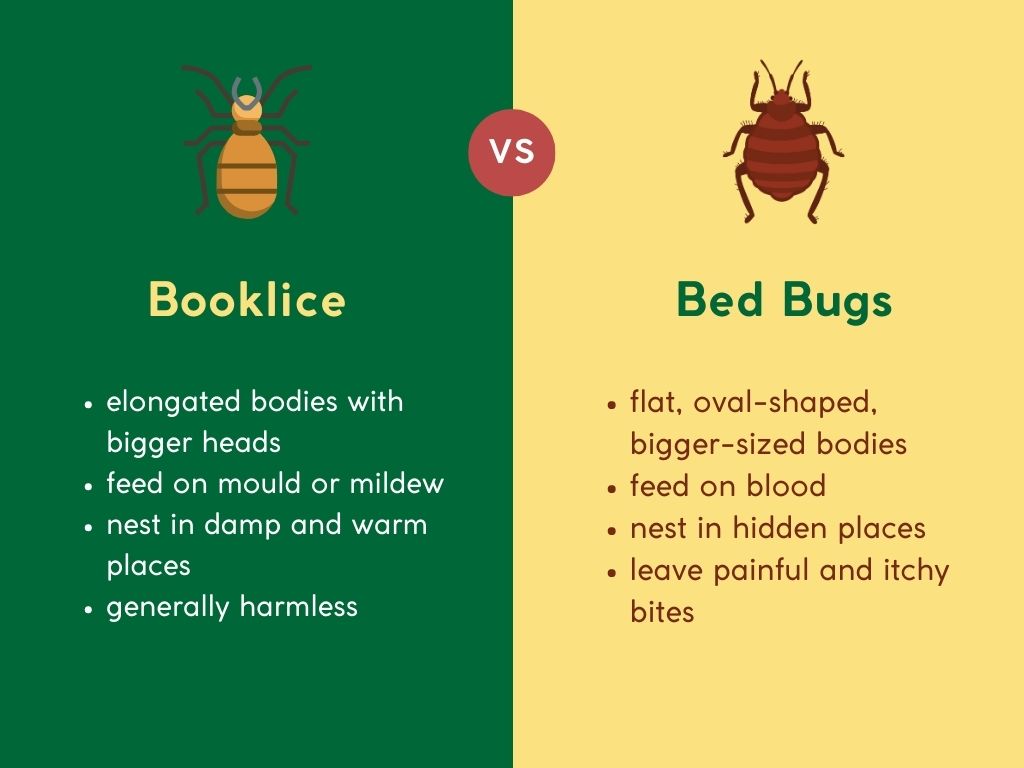
What are the main characteristics of booklice and bed bugs?
- Booklice are smaller than bed bugs
- Bed bugs feed on blood, booklice feed on mould or mildew
- Bed bugs leave painful and itchy bites on humans, while booklice do not bite
Signs of bed bugs and booklice
We now know that bed bugs and booklice behave differently. Are you concerned that you may have an infestation of bed bugs or booklice? Let’s sum up the main signs.
The main signs of a bed bugs infestation include:
- Reddish stains on bed sheets
- Dark spots on the mattress
- Dark spots on other furniture
- A sweet, musty smell
- Bites and itches on your skin (red spots)
The main signs of a booklice infestation include:
- Powdery or small black spots near cardboard materials and books
- Crawling insects near windows, doors, bookcases and areas with high humidity
The Ultimate Guide to Booklice

Bed bugs versus booklice: What damage can they cause?
The most important creature to cause damage is a bed bug. They leave painful, itchy bites on the human flesh. Booklice are not that interested in human beings.
Both bed bugs and booklice can cause material damage. In the case of bed bugs, they can turn your bedroom into a living hell. Stains of blood from bed bugs is the most common damage caused by the little insects.
Booklice spend most of their time around products made of paper and cardboard. Hence, one of the most common types of damage caused by booklice is the destruction of books. You may also want to protect your most important paper documents to prevent booklice from destroying them.
Pro Tip: To get rid of any infestation, you need to identify what type of pests you are dealing with and where they come from.
How to remove bed bugs and booklice?
Let’s move to the most important part of our comparison of bed bugs versus booklice. There are various approaches to removing pest infestations.
If you think you have a booklice infestation, you can take some action yourself to try to remove them. One of the things you can do is reduce humidity by using dehumidifiers. If you have any water leakage, it is also worth to get it fixed. There are some essential oils that may prove to be helpful, such as peppermint and lavender oil.
A bed bugs infestations is much more serious and requires the intervention of a professional. Contact your nearest pest control company for an inspection and removal treatment. If you do want to take some action yourself in the meantime, it is a good practice to wash your bedding frequently in hot water. This will help prevent further aggravation in the short term. To get rid of the bed bugs infestation for good, a pest control technician needs to come in and go to the source of the problem.
Author: Soleha Nisaa
Frequently Asked Questions
Booklice can be easily mistaken for bed bugs, especially bed bug nymphs. Both are light-colored but bed bug nymphs have less elongated bodies.
Booklice are less harmful to people and animals as they don’t bite, however, both bed bugs and booklice can cause some disruption and stress.
Booklice can be found anywhere with moisture, including upholstered furniture, damp papers or books, and old mattresses.
Bed bugs can be mistaken for bat bugs, spider beetles, baby cockroaches, carpet beetles, ticks, fleas, booklice, or headlice.


